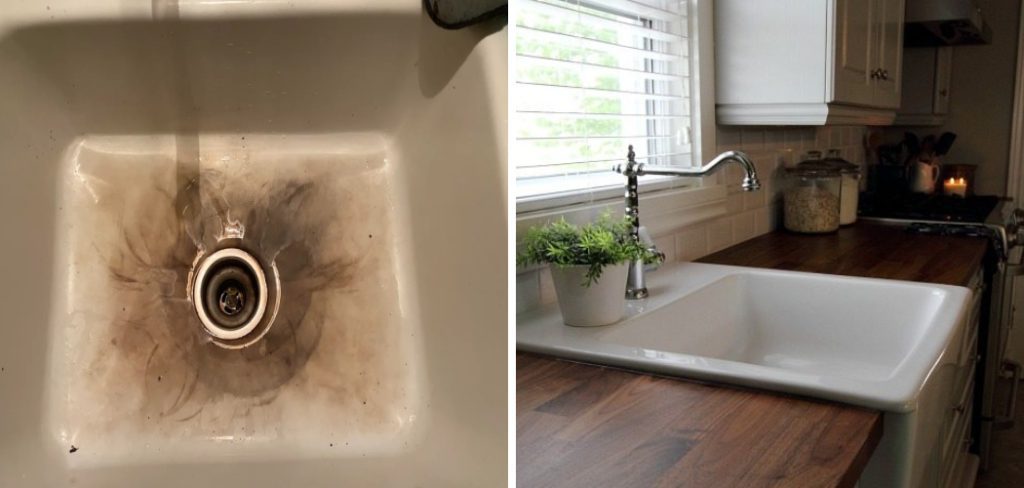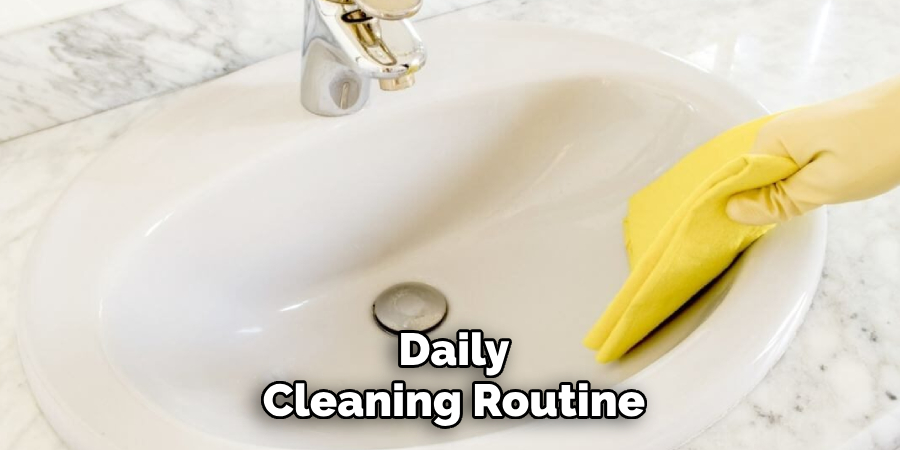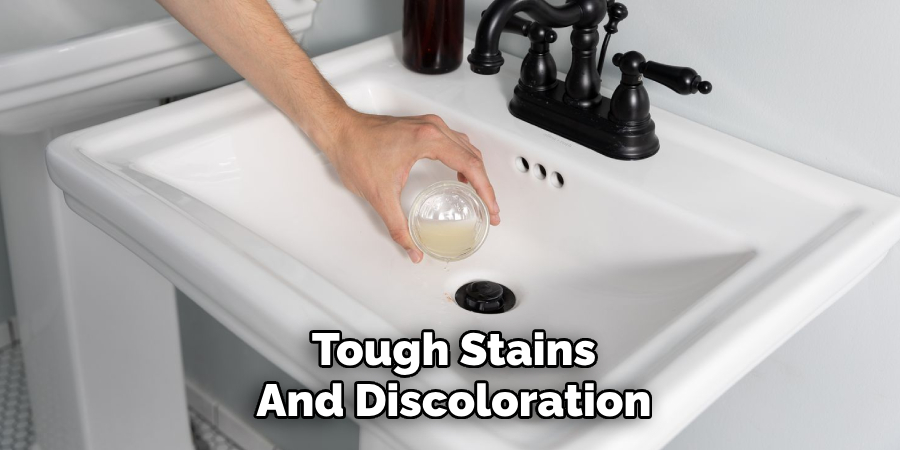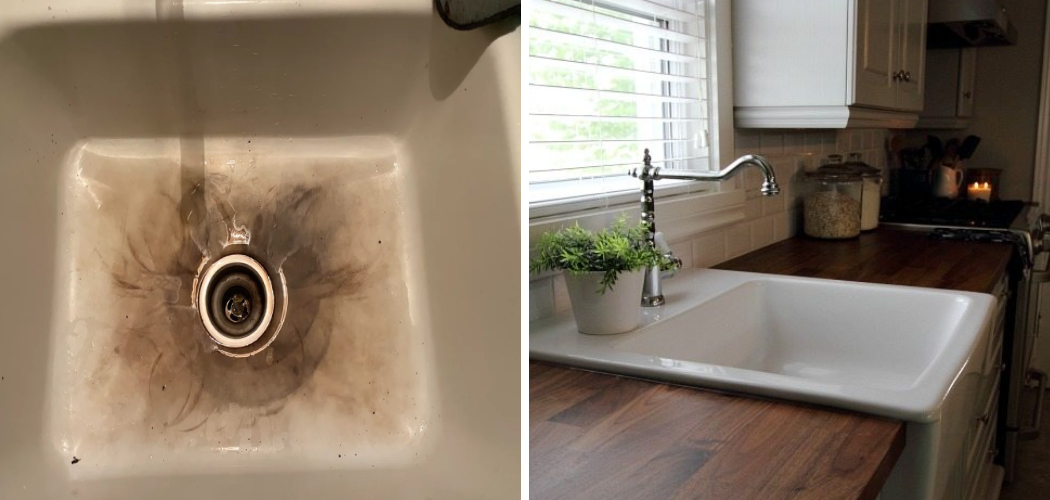Porcelain sinks are a popular choice for kitchens and bathrooms due to their glossy finish and timeless appeal. However, despite their durability, they are susceptible to stains, scratches, and a dull appearance if not properly maintained. Over time, grime, bacteria, and hard water deposits can accumulate, detracting from the sink’s natural beauty and hygiene. Regular cleaning is essential not only to preserve the sink’s elegant look but also to extend its lifespan and ensure a sanitary environment.

This article offers a comprehensive, step-by-step guide on how to clean porcelain sink surfaces effectively. By using safe, non-abrasive methods and simple household products, you can keep your sink in pristine condition for years to come.
Understanding Porcelain Sink Material
What is Porcelain?
Porcelain is a material commonly used for sinks, prized for its smooth, durable, and non-porous surface. It is typically made from a layer of enamel coated over a base of cast iron or steel, which gives it both strength and an attractive glossy finish. This combination ensures that porcelain sinks are both aesthetically pleasing and functional for everyday use.
Common Problems
Despite its resilience, porcelain is not immune to certain issues. Stains caused by coffee, rust, hard water, or leftover food can mar its pristine surface over time. Additionally, minor scratches may appear, often the result of using utensils or improper cleaning methods that contain abrasive materials. These imperfections can not only affect the sink’s appearance but also make it more challenging to keep clean.
Why Special Care Is Needed
Porcelain sinks require gentle handling to keep their surface looking its best. Harsh chemicals and scrubbing tools can wear down the enamel coating, resulting in damage to the finish or a loss of the sink’s signature glossy shine.

Proper care ensures the sink remains both functional and attractive, preserving its longevity and maintaining the material’s integrity.
Tools and Materials Needed
Basic Cleaning Supplies
To effectively clean your porcelain sink, start with these basic supplies:
- Baking soda for gentle scrubbing and stain removal.
- Vinegar as a natural disinfectant and deodorizer.
- Dish soap to cut through grease and grime.
- Lemon juice for tackling odors and adding a fresh scent.
- Hydrogen peroxide (optional) for whitening stubborn stains.
- Non-abrasive sponge or soft cloth to prevent scratching the surface.
- Spray bottle and toothbrush for detailed scrubbing in hard-to-reach areas.
Optional Supplies for Deep Cleaning
For a more thorough cleaning, consider these additional tools and products:
- Commercial porcelain-safe cleaners, designed specifically to remove tough stains while protecting the finish.
- Magic erasers or pumice stones, which can be used cautiously to lift heavy stains and mineral deposits (test on a small area first to avoid damage).
- Soft microfiber towels for drying and polishing, leaving the sink with a streak-free, glossy finish.
With the right tools and materials, maintaining your porcelain sink’s appearance and functionality becomes a straightforward task, ensuring its long-lasting charm and utility.
Routine Cleaning Method
Maintaining the pristine condition of your porcelain sink is easy with a simple daily cleaning routine. Follow these steps to ensure your sink remains spotless and gleaming:
Step 1: Rinse and Remove Debris

Start by removing any dishes, utensils, or debris from the sink. Use warm water to rinse the sink, sweeping away loose food particles and residues. This initial rinse helps prevent buildup and prepares the sink for a deeper clean.
Step 2: Apply Dish Soap and Scrub
Apply a small amount of mild dish soap to a non-abrasive sponge. Gently scrub the sink’s surface, focusing on areas with visible grime or stains. Use small, circular motions to lift away food residue and surface dirt without damaging the porcelain’s smooth finish.
Step 3: Rinse and Dry
Once the scrubbing is complete, rinse the sink thoroughly with warm water to remove any soap residue. Use a soft microfiber towel to dry the sink, preventing unsightly water spots or streaks. Drying also helps preserve the glossy finish of the porcelain.
Frequency
For best results, perform this routine cleaning daily or after heavy use. By integrating this method into your daily habits, you’ll not only preserve the sink’s appearance but also prevent persistent stains or debris buildup over time, ensuring your porcelain sink continues to look its best.
How to Clean Porcelain Sink: Removing Tough Stains and Discoloration
Even with regular cleaning, tough stains and discoloration can sometimes develop on porcelain sinks due to prolonged use. However, a few simple steps can help restore your sink’s pristine condition without causing damage.

Step 1: Baking Soda Paste
Start by making a paste using baking soda and a small amount of water. Apply the mixture directly to the stained areas, ensuring they are fully covered. Use a non-abrasive sponge or cloth to scrub the affected areas in circular motions gently. Baking soda is mildly abrasive, making it effective at lifting stains without scratching the porcelain surface.
Step 2: Vinegar Spray or Lemon Juice
To enhance the stain-lifting power, spray white vinegar over the baking soda paste, or apply fresh lemon juice. You’ll notice a fizzing reaction as the acid works to break down stains and mineral deposits. Allow this reaction to work for a few minutes before gently scrubbing again with your sponge.
Step 3: Whitening with Hydrogen Peroxide
For deeper, more persistent stains, apply hydrogen peroxide to the affected areas. Use a cotton ball or soft cloth to dab the peroxide generously onto the stains. Leave it to sit for 15–20 minutes, allowing it to bleach and whiten the surface effectively. Be sure to check periodically to avoid over-bleaching.
Step 4: Rinse and Buff Dry
After treating the stains, thoroughly rinse the sink with clean water to remove any residue. Finish by drying the sink with a soft microfiber towel to restore its glossy shine and prevent water spots from developing. Following this routine will help maintain the sink’s beauty and functionality.
Deep Cleaning for Tough Build-Up
Even with regular maintenance, stubborn buildup can still occur over time. For a more thorough cleaning, follow these steps to tackle tough stains and deposits effectively.
Step 1: Apply Commercial Cleaner or Paste
Begin by applying a porcelain-safe commercial cleaner or a homemade paste made from hydrogen peroxide and baking soda. Spread the solution evenly over the affected areas, focusing on spots with visible buildup or discoloration.
Step 2: Scrub with a Soft Brush
Using a toothbrush or a soft scrub brush, gently work the cleaner into the surface. Pay special attention to detail areas such as around the drain, edges, and corners where grime tends to accumulate. Light circular motions will help lift stubborn stains without damaging the porcelain.
Step 3: Optional Use of Magic Eraser or Pumice Stone
For particularly persistent stains, a Magic Eraser or pumice stone can be used. Apply gentle pressure while buffing the stained areas, taking care not to press too hard as excessive force may scratch the sink’s surface.
Step 4: Final Rinse and Polish
Once all build-up and stains have been removed, thoroughly rinse the sink with clean water to eliminate any residue. Dry the sink with a microfiber cloth to restore its glossy shine and prevent water spots. This step ensures your sink stays sparkling clean and ready for use.
Preventing Future Stains and Damage
Taking proactive measures can help maintain your sink’s pristine condition and extend its lifespan.
Daily Maintenance Tips
Rinse your sink with clean water after each use to remove food particles and residues. After rinsing, wipe the sink dry using a soft cloth or towel to prevent water spots and mineral deposits from forming. Be mindful of acidic or staining substances, such as coffee, tea, wine, or tomato sauce, as they can quickly discolor the surface. Clean these spills promptly to avoid permanent stains.
Protecting the Surface

To prevent chipping or scratching, consider using a sink mat as a protective barrier for the porcelain surface. This will reduce the impact of dishes or utensils being placed or dropped into the sink. Additionally, avoid using abrasive cleaners, steel wool, or other harsh tools, as these can scratch and dull the glossy glaze of your sink.
Weekly Maintenance
Dedicate time each week for a more thorough cleaning to prevent buildup. Use gentle, non-abrasive cleaners that are safe for porcelain surfaces. This routine cleaning ensures grime doesn’t accumulate and keeps your sink looking its best for years to come. By adopting these simple habits, you can effectively prevent future stains and damage and keep your sink sparkling and flawless.
Conclusion
Knowing how to clean porcelain sink surfaces is key to preserving their beauty and durability. Start with daily rinsing to remove residue and prevent staining. For stubborn spots, a combination of baking soda and vinegar works wonders, while hydrogen peroxide can be used to whiten and restore the sink’s brightness. Always use gentle, non-abrasive methods to protect the glossy glaze and prevent scratches. With consistent care and the right approach, your porcelain sink can remain sparkling and fresh for years to come, becoming a lasting centerpiece in your kitchen or bathroom.

